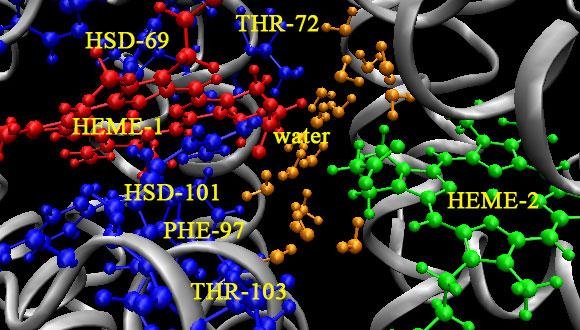Chemical Physics Seminar: Advanced Magnetic Resonance Spectroscopy to Characterize Renewable Energy Materials
Dr. Sheetal Jain, University of California Santa Barbara
Zoom: https://zoom.us/j/94544060729
Abstract:
Nuclear Magnetic Resonance (NMR) is a versatile spectroscopic method widely used to obtain atomically resolved structural and dynamical information of biological systems, organic and inorganic molecules, and materials. The local structure and dynamics of function-determining sites are fundamental to the properties of renewable energy materials. However, the intrinsic low sensitivity in solid-state NMR is the primary roadblock in its application to systems such as catalysts for biomass energy conversion reactions, and semiconductors for solar energy harvesting. On-going developments to address the problem of sensitivity in solid-state NMR will be presented together with the examples showing their applicability.
Typically, radio-frequency (RF) pulse sequences drive the transition of spins between different nuclear energy levels to enable acquisition of information on the system of interest. Therefore, the development of efficient RF pulse sequences is essential for improving NMR sensitivity. Cross-Polarization (CP) among different nuclear spins, is the most commonly used NMR method to improve the sensitivity as well as to obtain inter-nuclear distances, orientation and dynamical information based on through space spin-spin interactions. The application of a new RF pulse sequence for efficient CP among nuclear spins with large anisotropic interactions due to high (S>1/2) spin numbers and asymmetric environments will be presented.
A rapidly emerging hyperpolarization technique that can enhance the sensitivity of NMR by orders of magnitude is known as dynamic nuclear polarization (DNP). State-of-the-art DNP utilizes continuous wave (CW) microwave (µw) irradiation for transferring the polarization of highly polarized electron spins of exogenously added paramagnetic centers to sensitize the nuclear spins of the target system. Applications of DNP enhanced NMR spectroscopy, in combination with the advanced RF pulse sequences, to detect the presence of various acidic sites in catalytic materials will be shown. Furthermore, the on-going developments in DNP to further expand its applicability by using microwave pulses instead of CW irradiation to optimize the electron to nuclear spin polarization transfer will be discussed. Finally, the concept and examples of endogenous DNP using paramagnetic metal centers, intrinsic to the system of interest, as the source of polarization to enhance sensitivity of the surrounding nuclear spins, will be presented. Endogenous DNP is a critical step towards performing “hyperfine DNP spectroscopy” to extract the local structural information directly from the electron-nuclear hyperfine interaction while detecting sensitivity enhanced NMR signal. Using a combination of these methods, structural characterization of renewable energy materials can provide key information to pave the path towards optimal design of novel materials and broaden the scope for innovation.


